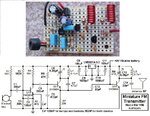healthkart
Newbie level 3
Hello,
Guys i am trying to build a spy fm transmiter (bug)
i have found a great resource http://www.talkingelectronics.com/projects/Spy Circuits/SpyCircuits-1.html
but he has written too lenghty /although accurately & am too confused from this resource, i would like to build the lucidscience.com bug to which he has made corrections but the last capacitance value & how to seperate the module stuff has confused me.
he has a voyager bug which am considering but its fr 2 km
my requirements is as such
300 mtrs transmission
can be listened on mobile phone fm reciever
small size(a bug should be a bug)
Help me with my dilemma,
if any of you guys knw of a crkt which has been verified as working with optimal results do share with me.
thank you
Guys i am trying to build a spy fm transmiter (bug)
i have found a great resource http://www.talkingelectronics.com/projects/Spy Circuits/SpyCircuits-1.html
but he has written too lenghty /although accurately & am too confused from this resource, i would like to build the lucidscience.com bug to which he has made corrections but the last capacitance value & how to seperate the module stuff has confused me.
he has a voyager bug which am considering but its fr 2 km
my requirements is as such
300 mtrs transmission
can be listened on mobile phone fm reciever
small size(a bug should be a bug)
Help me with my dilemma,
if any of you guys knw of a crkt which has been verified as working with optimal results do share with me.
thank you
